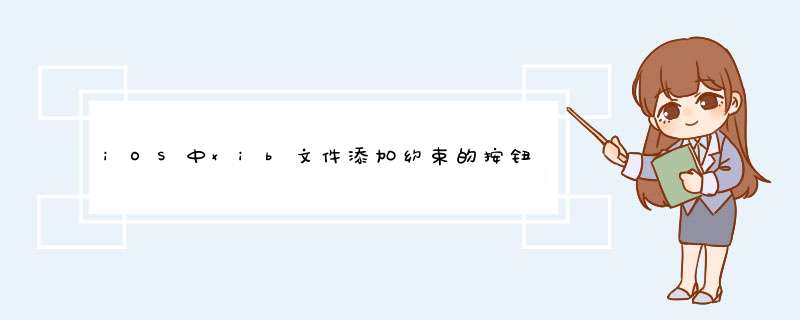
NSArray *views = [[NSBundle mainBundle] loadNibNamed:@"RowView" owner:nil options:nil]
2.取出xib中的第一个子控件:
UIView *rowView = views[0]
3.设置头像
UIButton *icon = (UIButton *)[rowView viewWithTag:1]
NSString *iconName = [NSString stringWithFormat:@"01%d.png", arc4random_uniform(9)]
[icon setImage:[UIImage imageNamed:iconName] forState:UIControlStateNormal]
4.设置姓名
UILabel *name = (UILabel *)[rowView viewWithTag:2]
name.text = _allNames[arc4random_uniform(_allNames.count)]
5.监听删除按钮
UIButton *delete = (UIButton *)[rowView viewWithTag:3]
[delete addTarget:self action:@selector(deleteClick:) forControlEvents:UIControlEventTouchUpInside]
跳转到xib时,让xib自适应屏幕的大小的方法是:添加约束
这里举一个例子,步骤如下:
1)cocoaPod的podfile文件如下
2)StoryBoard添加子视图View1如下
3)所要加载的xib如下
4)viewcontroller加载XIB到某个视图上,并约束其大小代码如下
如果想自适应屏幕大小,只要在4)代码中相应的把self.View1改成self.view即可~
有时候我们经常需要自定义tableView的cell,当cell里面的布局较为复杂时往往舍弃纯代码的方式而改用xib的方式进行自定义。当我们用纯代码的方式布局cell时,往往会在cell的initWithStyle: reuseIdentifier: 方法里面用纯代码进行布局欢迎分享,转载请注明来源:内存溢出

 微信扫一扫
微信扫一扫
 支付宝扫一扫
支付宝扫一扫
评论列表(0条)